Aldersyde then and now
Approximately forty years separate the two pictures shown and in that time the small town of Aldersyde Alberta has changed a great deal. Well, at least in the area around the railway tracks has and one would be hard pressed to say this is even the same location. But it is based upon old maps I have seen.
For one the station is gone, replaced by section house. Or perhaps the section house was directly behind it and only become visible from this angle after the station was torn down. Either way. Given how small a town Aldersyde is, it sure does have a big station. Perhaps this is due to it being at a junction where two lines converged (more below).
Coming in from Calgary at this point we are along the CPR MacLeod Subdivision which formerly continued from here south to the town of Fort MacLeod which is along that railway’s southern mainline. As of 2012 this line has been cut back to a spot just north of High River, so a few kilometres from here. In the past it hosted thorough freights, but later it was only locals, before finally being abandoned in the late 1990s. Except for that small stub I mentioned which is used to serve a large slaughterhouse, and further south, to store excess cars.
The second line discussed, unseen but branching away a few hundred metres from here (behind or south of where I was shooting) is the Aldersyde Subdivision. It too heads south connecting with the southern mainline at a more easterly at a point near Lethbridge Alberta. While longer and less direct than the MacLeod subdivision, I understand it was of more robust construction and so it became the route of choice for through freights heading south. Freights that formerly used the MacLeod line.
Both trains seen in these pictures will travel the Aldersyde Subdivision as by the 1970s the MacLeod line was relegated to branchline status and today of course has been truncated.
Back to the station, it’s not clear when it was torn down. But one thing this authors has noted is that CPR retained many stations into the 1970s. Perhaps they did not wish to spend money on tearing them down and so many seemed to hang on long after they were needed.
Of interest to train geeks are the engines seen in the first image. Leading the consist is a GMD (or GMDD, General Motors of Canada Diesel Division) model GP-9. This engine, number #8512 was often seen in and around the Calgary area judging from the many pictures I have seen of it. Built by the London Ontario firm, under licence from the Electro-Motive Division company (EMD) in the USA, this locomotive was out-shopped in 1955. CPR was quite fond of this model and the next three engines in the consist are also GP-9s (they might also be the less common GP-7 which looks similar), although the picture is too fuzzy to identify their numbers.
Our lead engine is somewhat different in that it was built for a dual service role and could be used on passenger trains, by virtue of its steam heat generator, or on freights. Most other GP-9s were freight only. After a long life heading road trains, it was relegated to switcher status in the early 1980s before finally being retired in 2011. CPR sure got good mileage out of this engine!
Also seen in the consist, the last engine, is a GMD “F unit”.
The train I shot is being pulled by the always omnipresent GE AC4400 units. CPR has hundreds of these and they lead every train in the area. They are almost boring! CPR #9714 has had a pretty mundane life since being built in 2002, but one high point was leading the CPR holiday train in the mid 2000s.
The grain elevators are no more, long razed with only a few rough foundations to say they were ever there. All appear to be painted for the UGG (United Grain Growers) although it’s likely at sometime they belonged to another grain company. Trades, acquisitions and mergers happened so often in the Canadian grain industry that it was hard to tell who owned what. The one in the foreground is the oldest of the three and it stands out because its hipped roof and squared cupola. It does not follow the standard elevator pattern like the other two seen. I have come across no records indicating when these elevators were demolished.
At the peak there were over 1800 wooden elevators in Alberta, of which Aldersyde had three, and today only a few hundred remain across the province. How the prairie landscape has changed.
Aldersyde is now mostly an industrial park and is home to trucking companies and such and only a small residential section remains near the tracks. Not far away is the mysterious Magnesium Company of Canada, a very interesting place and a must read story.
Update: May 2013. Two of the Aldersyde elevators built for the UGG. The other was built for the Alberta Wheat Pool and later sold to UGG, exact dates unknown.
To see some other then and now posts we’ve done, follow these links…
Calgary Family of Man then and now.
Brokeback Mountain then and now – Riverton Wy bar.
Greenhill Mine then and now.
If you wish more information on this place, by all means contact us!
Date of adventure: September 2012.
Location: Aldersyde Alberta.
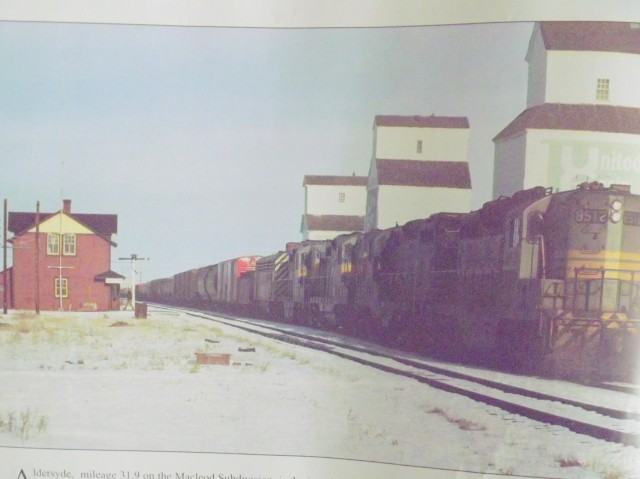
Aldersyde Alberta in the early 1970s.
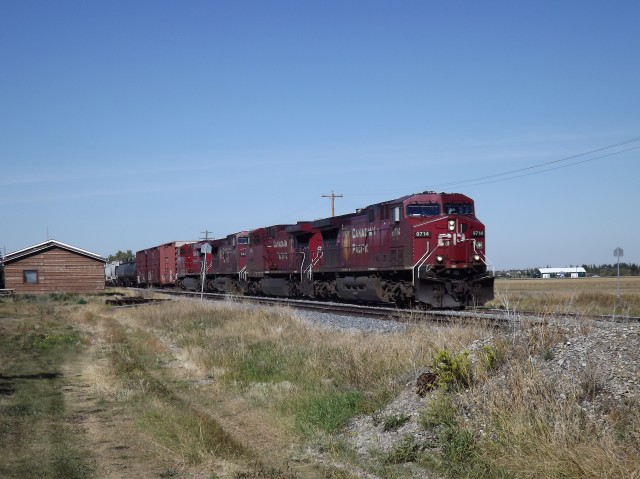
The same location as the photo above, in 2012.

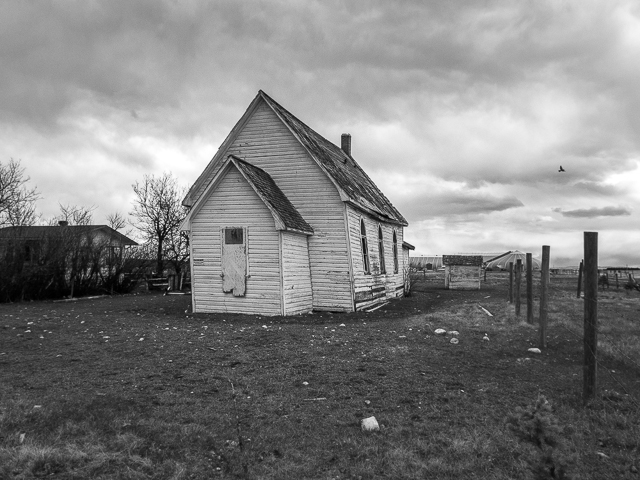
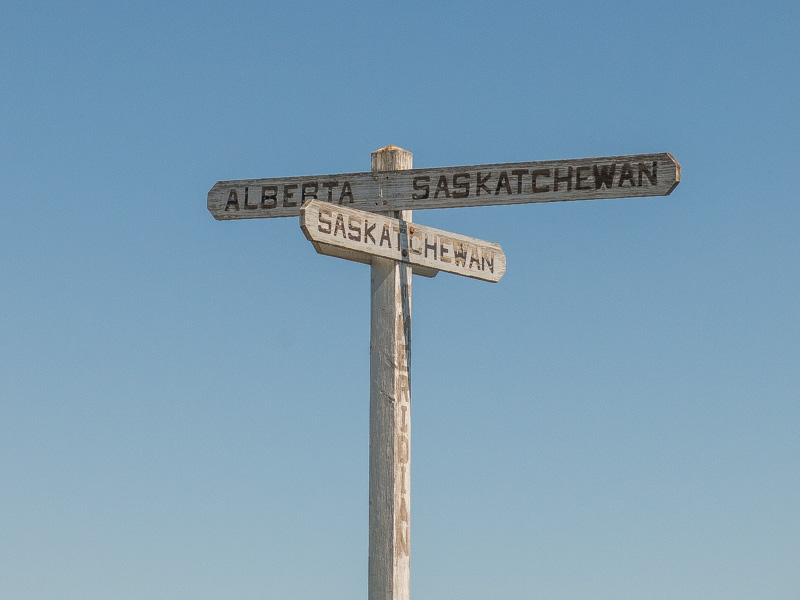
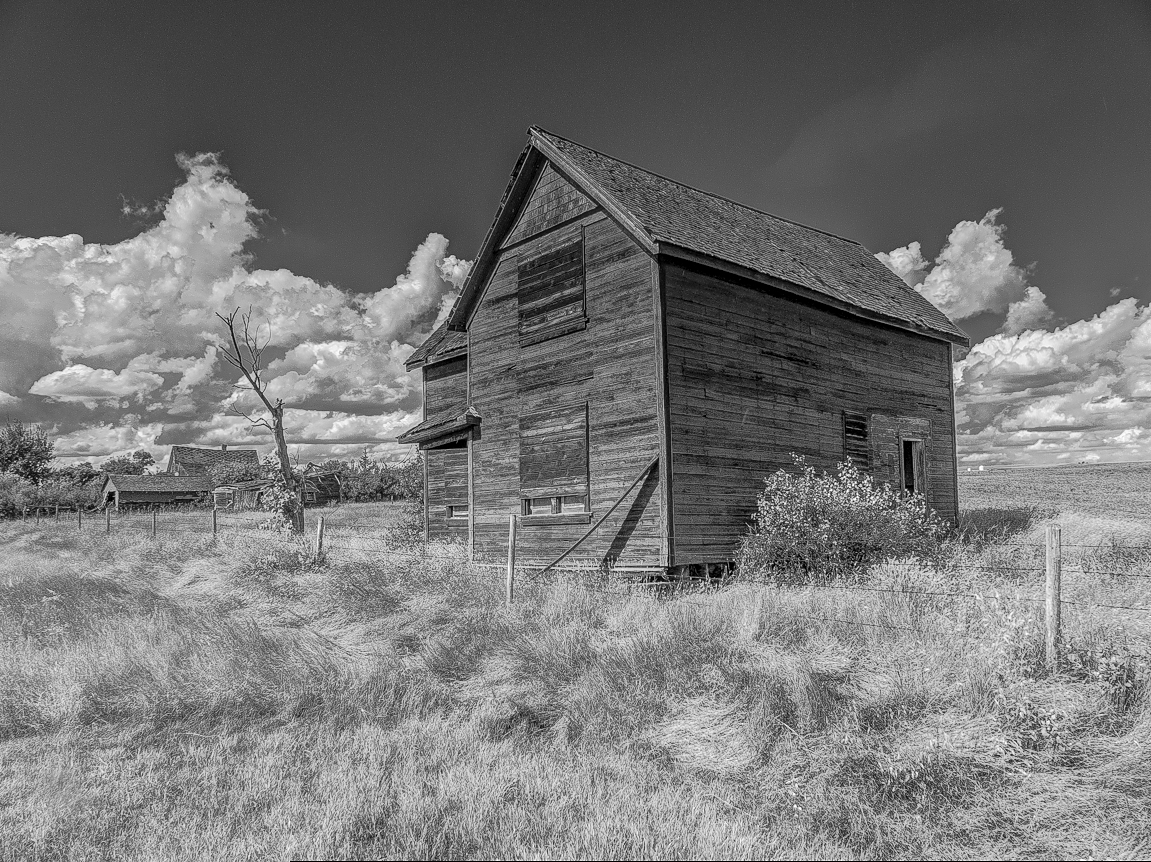
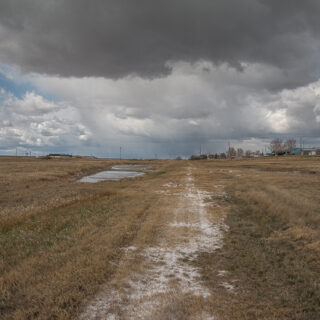
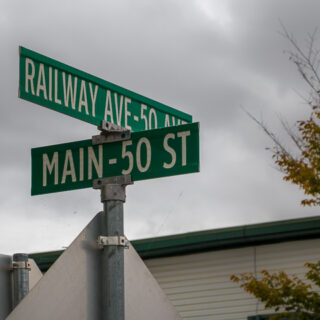
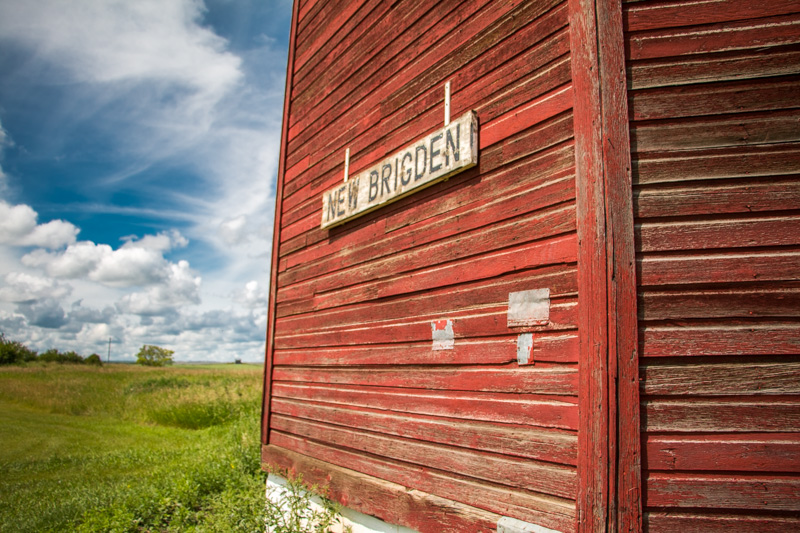
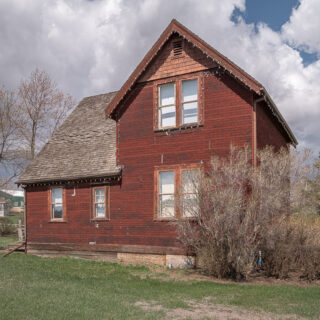
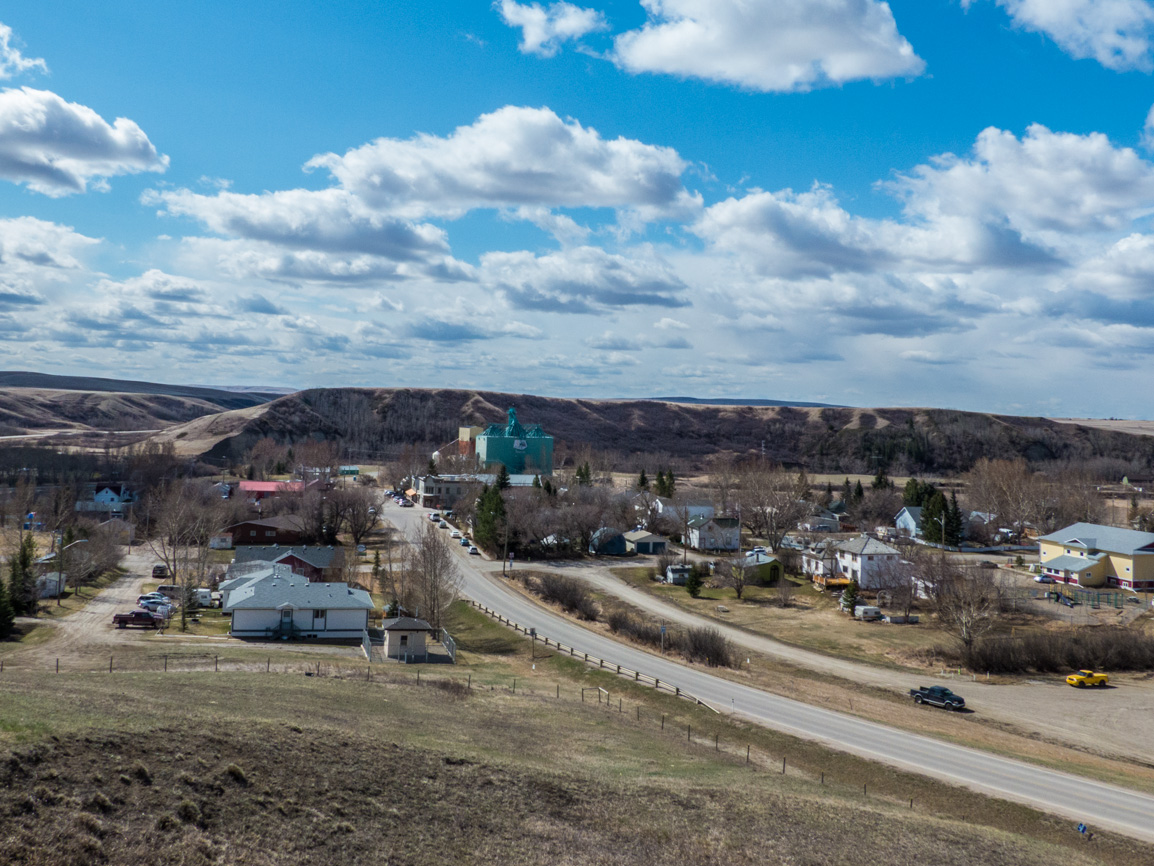
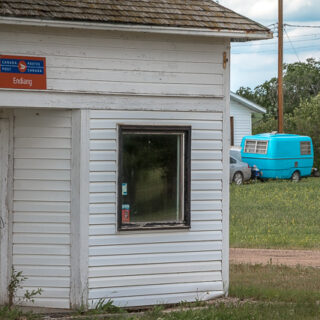
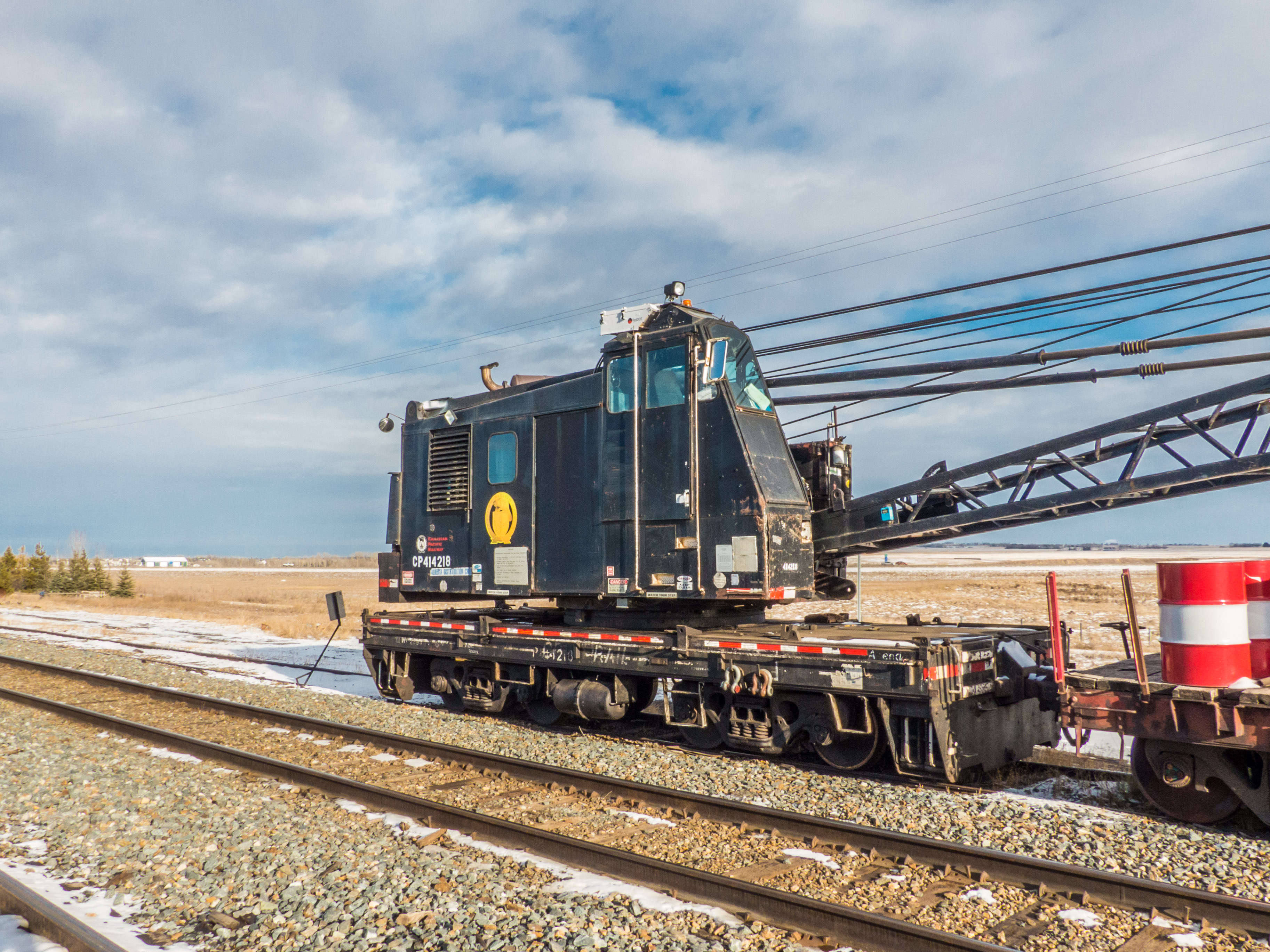
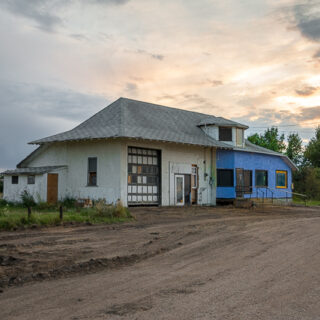
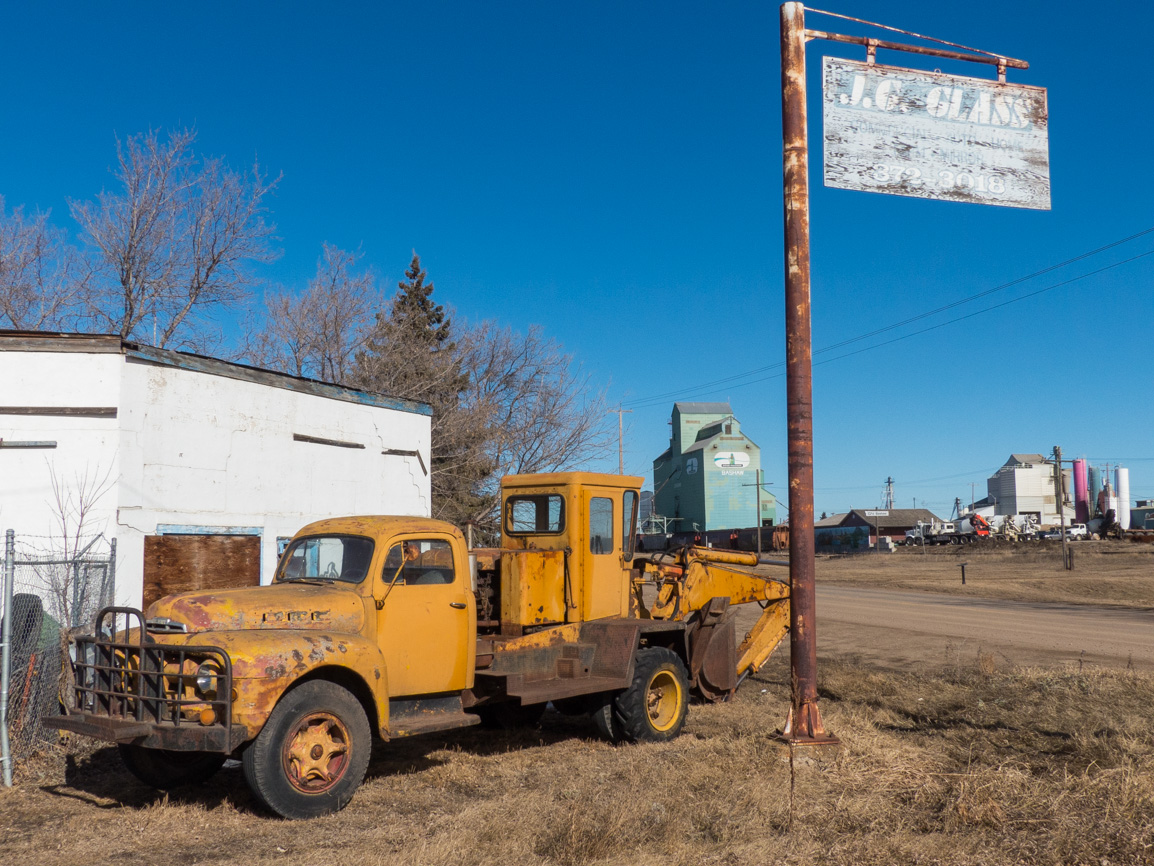
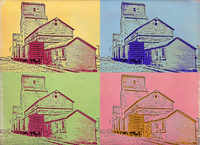






Aldersyde is a hamlet not a small town, the population is approx 65 people. It is a very cozy and kind community. The leaning church is one of the oldest buildings here it still has the original stained glass in the windows. Also the community hall used to be a church at one point in time as well. Alot of the houses here are very old my house will be 100 next year. There is also a tattoo shop (Pacific Ave Tattoo) which is one of the newest buildings that have been built here.
Our use of town was in the casual sense. We visited that church up close, eons ago, with the owner and I’m certain the windows were plastic reproductions. Unless you mean he has them stored somewhere else for safety’s sake. Thanks for commenting!
I lived in that train station as a kid. The upper windows were a bedroom, the lower was the kitchen. The buildings in the second photo did not exist when we lived there, it was just an open field. There was another building in front of the station from this angle, but I can’t remember what it was.
It was a great place to be a kid.
Thank you for sharing these wonderful memories. Living in a train station as a kid? How cool!